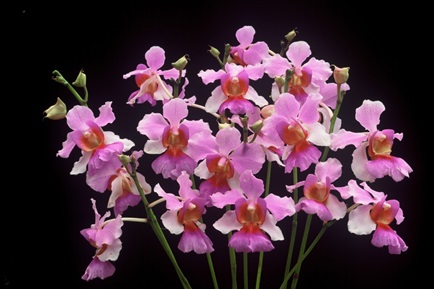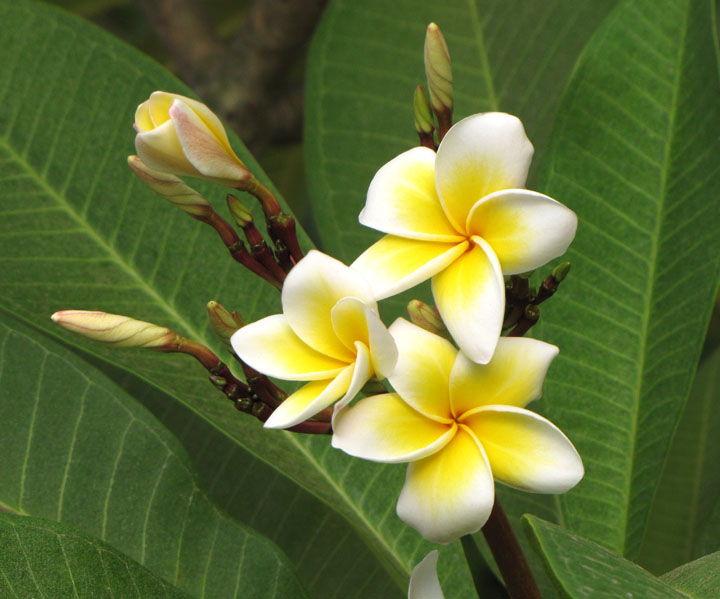In Southeast Asia, national flowers are more than just ornamental symbols — they are deeply rooted in cultural identity, tradition, and philosophy.
Across the ASEAN region, each country has chosen a flower that reflects the soul of its nation — whether through its resilience, fragrance, rarity, or its role in rituals and folklore.
Let’s explore how each of these national flowers carries the essence of a country’s heritage.
Indonesia – Jasmine, Moon Orchid & Rafflesia
Indonesia officially recognizes three national flowers, each representing a different aspect of national pride:
- Jasmine (Jasminum sambac), known as the "Puspa Bangsa" (national flower), symbolizes purity and sincerity. Often used in traditional weddings and rituals, it reflects modesty and deep emotional value in Indonesian society.

- Moon Orchid (Phalaenopsis amabilis), or "Puspa Pesona", is admired for its elegance and grace. It represents the charm and beauty of Indonesia's people and nature.

- Rafflesia Arnoldi, the "Puspa Langka" (rare flower), is the largest flower in the world and endemic to Sumatra. Its size and distinctiveness symbolize Indonesia’s biodiversity and environmental richness.

These three were officially designated in 1993, showcasing Indonesia’s blend of cultural beauty, charm, and ecological uniqueness.
Malaysia – Bunga Raya (Hibiscus rosa-sinensis)

The vibrant red Bunga Raya was declared Malaysia’s national flower in 1960. Its five petals represent the five principles of the Rukun Negara (national philosophy). With its bright color and widespread presence, it symbolizes courage, vitality, and unity among the Malaysian people.
Philippines – Sampaguita (Jasminum sambac)

The Sampaguita, a type of jasmine, was declared the national flower in 1934. Its small, white petals stand for humility, purity, and strength. Used widely in religious ceremonies and offered at churches, the flower reflects the gentle and devout spirit of the Filipino people.
Singapore – Vanda Miss Joaquim

Unlike most countries, Singapore’s national flower is a hybrid — Vanda Miss Joaquim, bred by horticulturist Agnes Joaquim. Selected in 1981, the flower represents innovation, resilience, and multicultural harmony. Its ability to bloom year-round embodies Singapore’s drive and perseverance.
Thailand – Ratchaphruek (Cassia fistula)

Known as the Golden Shower Tree, Ratchaphruek has bright yellow blossoms that signify prosperity and unity. It’s closely tied to the monarchy, particularly King Rama IX, as yellow symbolizes Monday, the day of his birth. This flower is a national emblem of loyalty and harmony.
Vietnam – Lotus (Nelumbo nucifera)

The Lotus is revered in Vietnam not only for its beauty but also for its symbolism. Growing from muddy waters, it blooms pristine and pure — a metaphor for rising above adversity. Deeply associated with Buddhism, it reflects clarity of mind, integrity, and national perseverance.
Laos – Dok Champa (Plumeria)

Dok Champa is considered a symbol of hospitality, sincerity, and joy. It is often found in temples and homes, and is given as a gesture of welcome. This fragrant flower plays a significant role in religious ceremonies and local celebrations.
Myanmar – Padauk (Pterocarpus indicus)

Padauk flowers bloom in golden clusters — but only for a day after the first rainfall. This fleeting beauty represents strength, youth, and renewal. It is closely tied to the Thingyan Festival (Burmese New Year), symbolizing new beginnings and hope.
Brunei – Simpor (Dillenia suffruticosa)

The Simpor is a large, bright yellow flower that grows in Brunei’s forests. Its leaves were traditionally used for wrapping food, and its image appears on the one-dollar Brunei banknote. Chosen for its distinct appearance, it reflects the country’s unique ecological heritage.
Cambodia – Rumduol (Mitrella mesnyi)

Rumduol is a small, fragrant flower that blooms at night and is native to Cambodia. It is associated with feminine beauty and is often featured in Khmer poetry and folklore. The government officially named it the national flower in the early 2000s.
Petals of Identity: A Floral Reflection of ASEAN Culture
Across the ASEAN region, national flowers bloom as silent storytellers — embodying cultural values, honoring tradition, and symbolizing national pride.
While vastly different in form, fragrance, and color, these flowers share a common role: to reflect the identity and soul of a nation. In understanding them, we don’t just learn about botany — we discover the living essence of Southeast Asia.


















